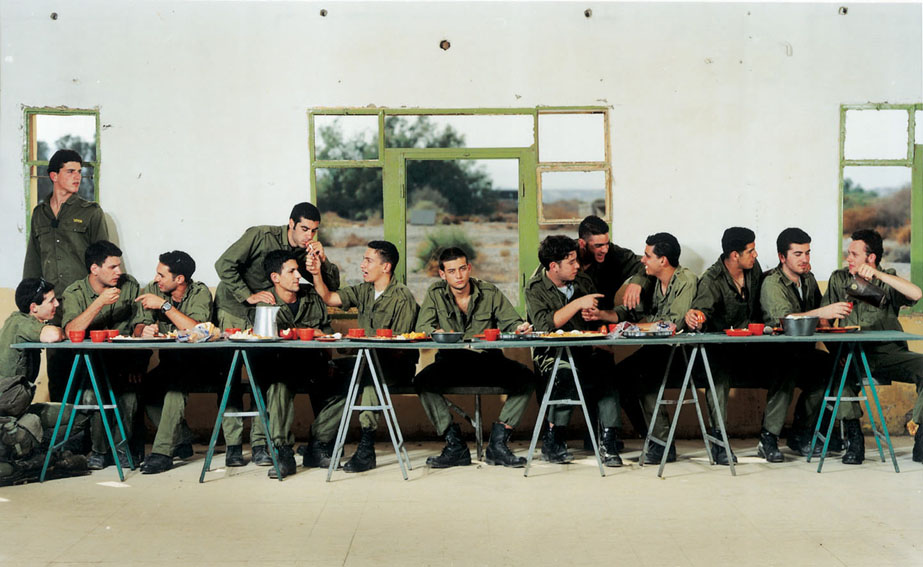Financial Times, Weekend, March 11/12, 2000
Seeing through the image
Judy Dempsey views a photographic exhibition of Israeli soldiers which is causing much soul-searching
A small Tel Aviv gallery tucked behind a narrow side Street not far from the sea-front is causing, if not a minor sensation, then certainly much soul-searching among its visitors.
On the white walls are 10 large photographs hung well apart from each other. All are of Israeli soldiers photographed when they were 18 years old, the age for entering the army. It is no coincidence that Israel invaded Lebanon 18 years ago, long enough to convince Ehud Barak, Israeli prime minister, that it is time to quit, with or without an agreement with Syria.
There have been previous exhibitions depicting life in the Israeli army. But what makes Adi Nes’s work different is his style and approach. His art, he explains, represents an alternative to, if not a rebellion against, the militarism of Israeli society. It is also about giving an identity to teenagers sent to fight a war even the military establishment knows is unwinnable.
“I wanted to humanise these soldiers,” said Nes, 34, who between 1984 and 1987 was an air traffic controller alone in the desert with a few other men”. In doing so, he has challenged the ethos of the Israeli army, if not the Israeli man and his masculinity. “The Israeli man has this identity of being very macho,” says Nes. In contrast, the young men in his photographs betray a sense of vulnerability, loneliness and terrible tiredness. They find comfort, literally leaning against each other and bathing together.
The macho image permeates many aspects of Israeli society. True, former generals or senior commanders there are at least half a dozen in Barak’s government – easily switch their uniforms for civilian clothes. Retired officers quickly switch to business on retirement. And former intelligence chiefs find their way into running banks or insurance companies. However, the uniforms are dusted down every year for 30 days of reserve duty and the army is still one of the main avenues to advancement.
Yet the price for such a system of militarism has been high. For Nes, “the power of the army is such that it erases the identity of the man, turning him into some kind of weapon. That is why I have already tried to put faces behind the people”. But Nes’s work goes beyond taking pictures and capturing the sense of tiredness that comes through these powerful images. In one striking photograph, “The Last Supper”, he combines Christian and artistic images, influenced by Leonardo da Vinci.
“I was not so much trying to give a face to God,” he explains. “I wanted to give faces to the soldiers.” It took Nes two years to find the right location and the soldiers for this study. In the end, he took the photo in and old barracks near the Dead Sea where the light captured the finality of that last supper. “I just feel that the boys are victims,” he says, like lambs going to the slaughter.
Another photograph, inspired by the myth of Sisyphus, shows two soldiers pushing a water tank up a dry, rocky, steep hill. They know that once they reach the top they will have to start all over again. It is irrelevant that the water will spill on the way up, that it will evaporate, or that it will immediately be used up. What matters is the seemingly interminable nature of war.
Nes, however, believes that as Israel grows more mature, it is becoming more tired — tired of war, tired of fighting, tired of endless conflicts. Maybe, he says, as soldiers and civilians realise this, society will begin to focus on different things, such as education and the environment — not just its relations with the Arabs. But if society is so tired, as these photographs show, Nes is far from optimistic that the bigger issues concerning the country’s future can be tackled head-on.
